Legends – The Battlefields of The Somme
Wed Jul 21, 2010 1:43 pm
After last years trip around the Ypres Salient, this year along with 3 good friends I again made the short hop across the channel on Flying Legends weekend to pay my respects to some real Legends.
An hour and a half drive from Calais the Somme Battlefields were very different from the Salient. Instead of being flat below sea level, they are quite hilly and mostly chalky. Like the Salient they are rural in nature.
The Somme has been fought over for years, there is a spot just outside Delville Woods where Julius Caesar is reported to have addressed his troops before giving the Gauls a good kicking. Later the Prussians invaded then of course there was the Great War. Afterwards the area of course came under the jackboots of the Nazis before liberation in 1944.
The Cemeteries’ themselves differ from those on Passchendaele because they are mostly what is known as “concentration” cemeteries. This means that they were created from scratch after the war when the battlefields were cleared, there are several notable exceptions to this as we will see later. Those on the Salient are similar but more often the concentration element is centred around an original cemetery. This does not detract from them one iota, they are still very moving places to visit. One major point that both the Somme and The Salient have in common is that the Germans nearly always held the high ground. In the case of the Somme they had held it for 2 years and because of the chalky ground they had dug in and created quite considerable fortifications.
Our plan was to tour the Battlefields from North to South.
Day 1
Our journey through the battlefields begins in the North at Serre. Here we visited Sheffield Park which is centred on the site of 4 small Copses, Matthew , Mark, Luke and John which today are now one wood. In the wood are several memorials. The first of which is to The Accrington Pals who attacked here on the 1st July 1916.
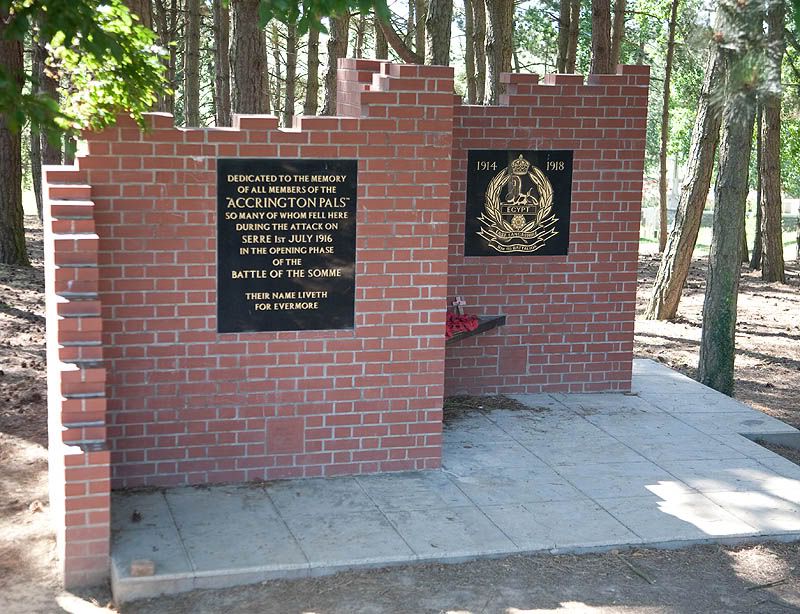
At the edge of the wood are the remains of the trench the 31st Division attacked from
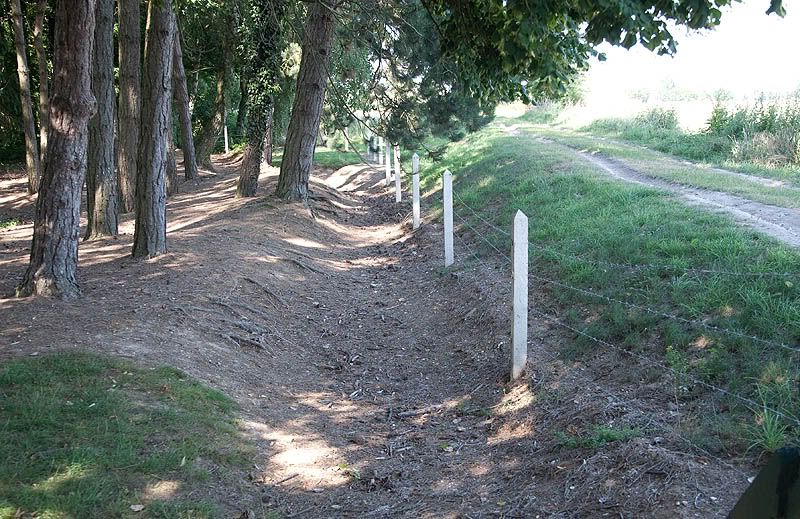
The view from the Trench towards the front line. The cemetery beyond the farmer is Queens Cemetery which is situated roughly mid way in No Mans Land. You will notice that the attack took place up hill, this will become a common theme.

A couple of the other memorials in Sheffield Park.
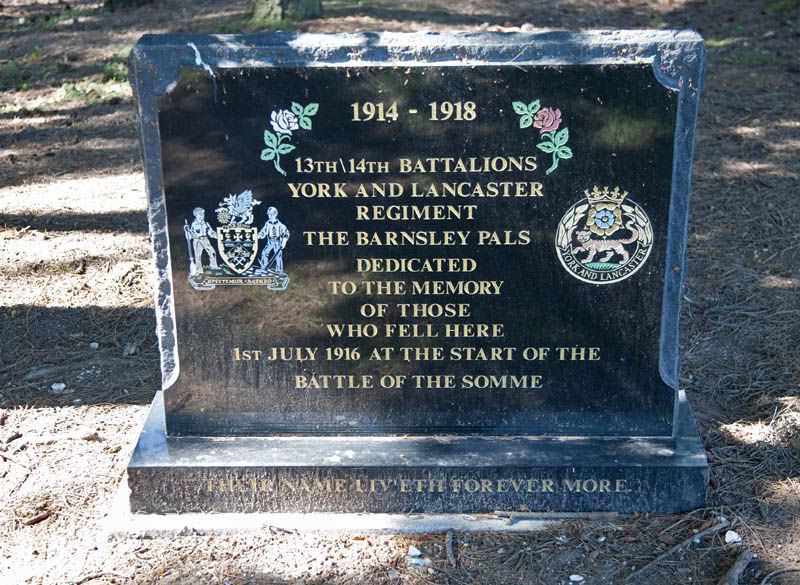

Heading through the park towards Railway Hollow Cemetery the land is as it was in 1918, with remains of trenches pock marked with shell holes.
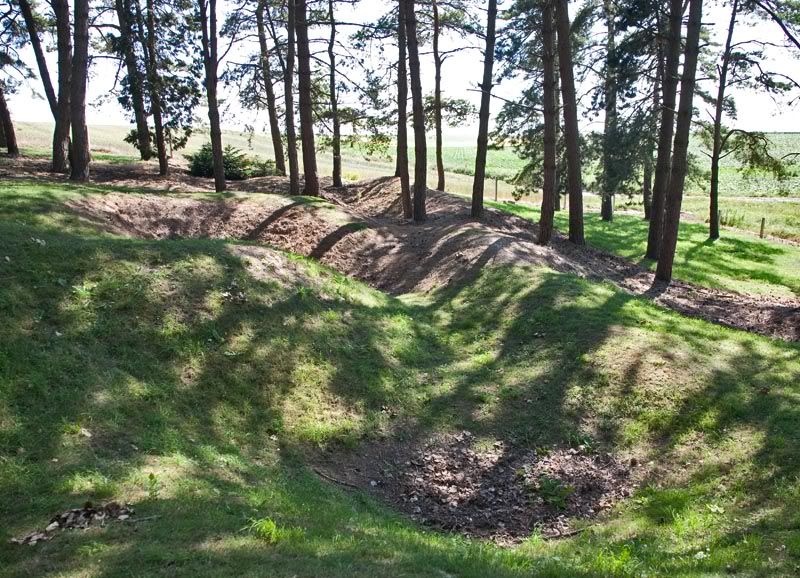
The Cemetery contains 107 UK burials and is on the line of the old military railway which ran through here.

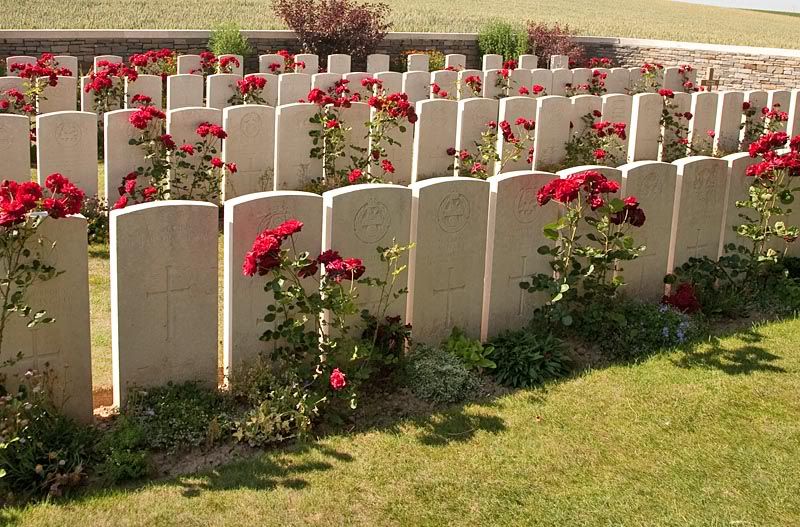
About 100 yards north of Sheffield Park is Like Copse Cemetery. A small cemetery of 72 burials of Sheffield City Battalion men. Including brothers L Cpl F and Pte W Gunstone, this marks the furthest north of the attacks on July 1st 1916. The men are buried in 1 long grave (a trench?) with the headstones staggered so that each man has his own.
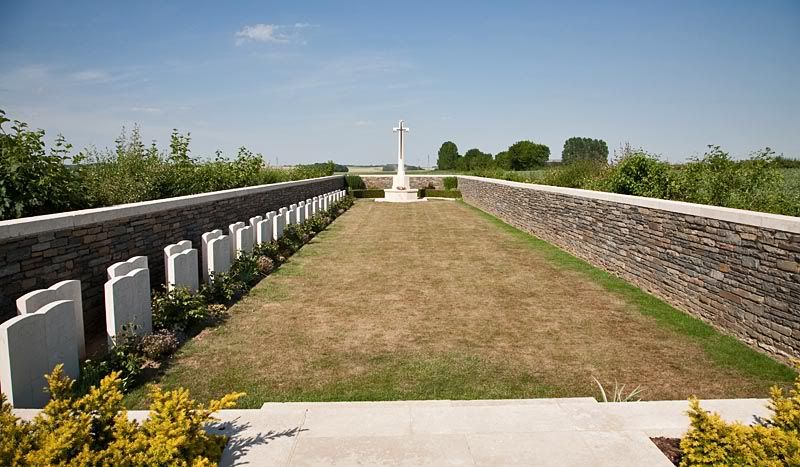
If you turn and look the other way, its just possible to make out the line of the trench system in the bean field beyond. This view looks back towards Sheffield Park and I have marked the probable trench line on it.

Up the hill as we saw earlier lies the Queens Cemetery. It contains 311 graves many of which are Accrington Pals a large proportion of which are unidentified as this part of the battlefield was fought over between July and November with little or no chance made to clear it of bodies.


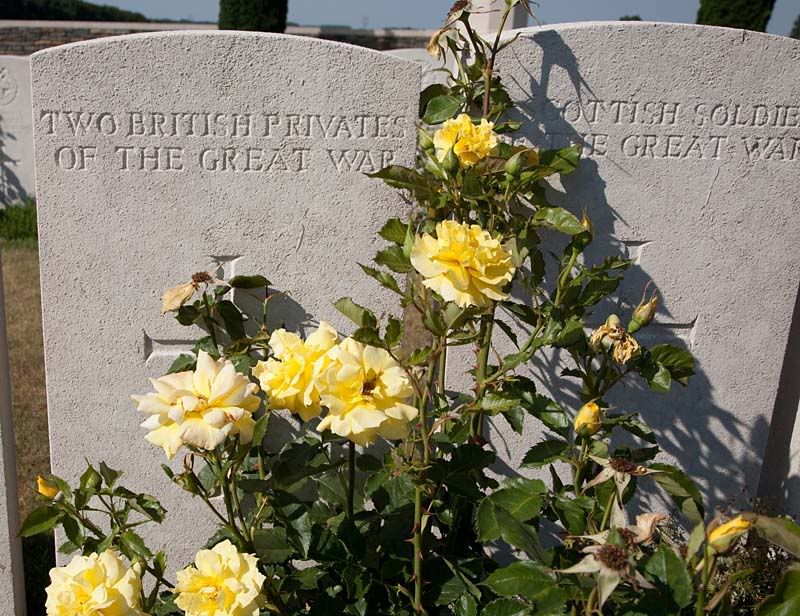
Walking up the hill about as far again and you come to the German Front line, looking back gives you and idea of what the Pals were up against. One machine gun could have/did mow them down.
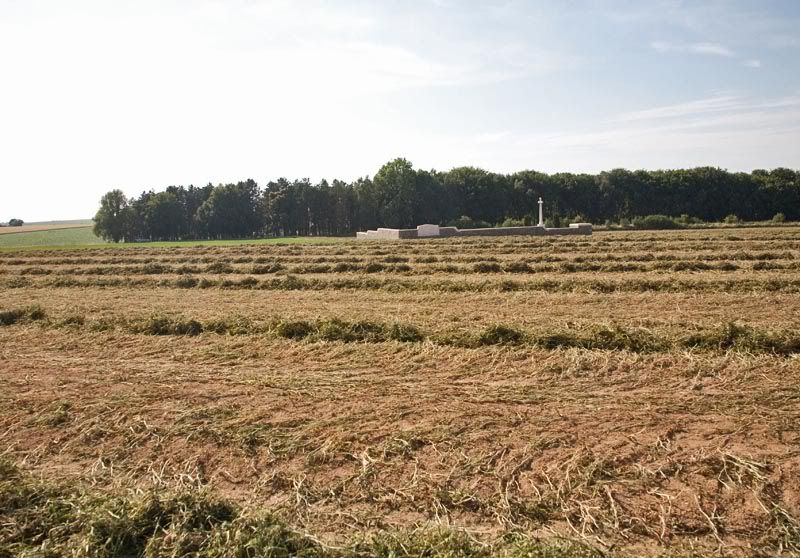
The final Cemetery in this locality is Serre Road Number 3. Here we found some of the Iron Harvest waiting to be collected, in this case and Artillery Shell that doesn’t appear to have been fired, or was a dud. We didn’t touch it, but some got closer than others!
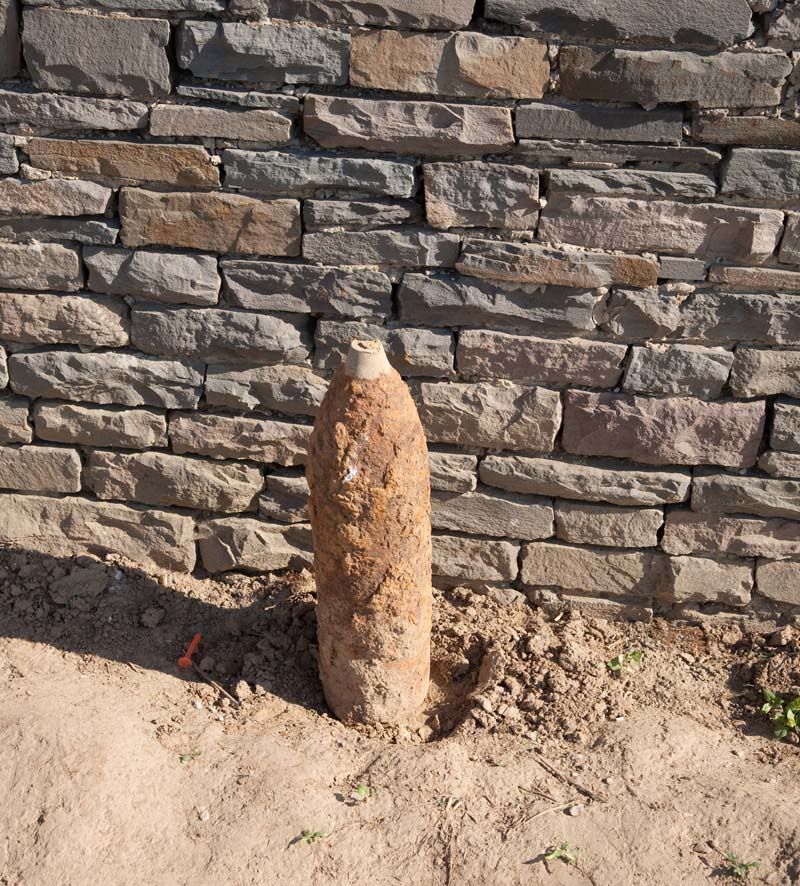
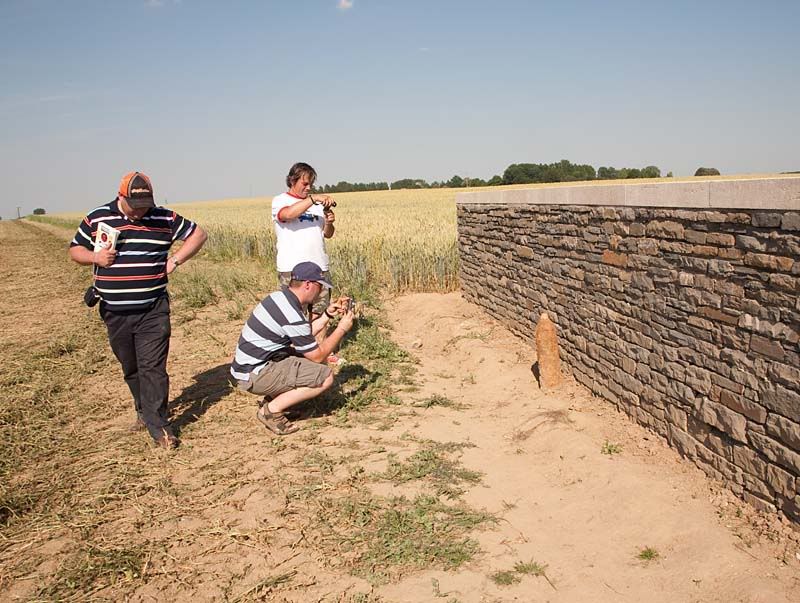
Heading back towards the main road, on the corner of a farm building is a memorial to the lost.
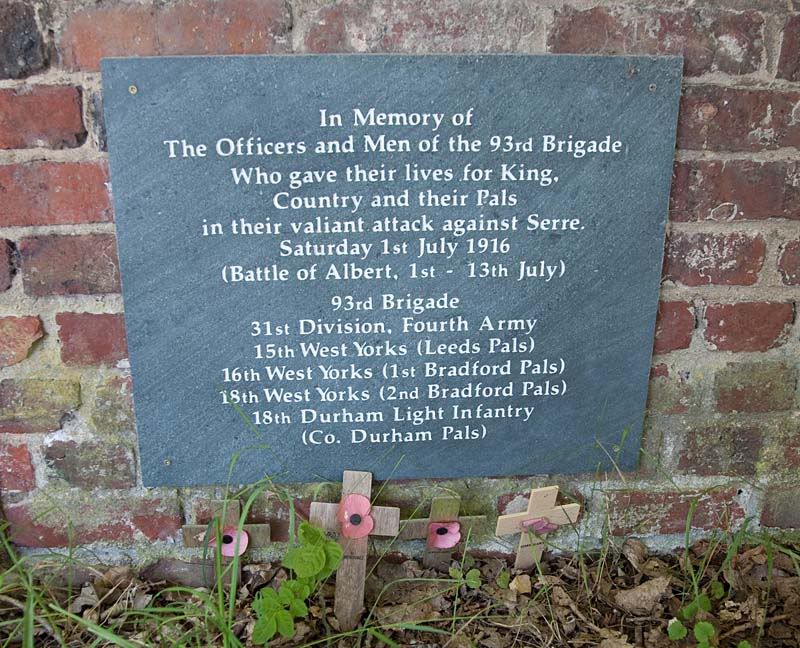
Back on the main road we stopped at Serre Road Cemetery Number 1. Here 71.6% of the 2412 burials are unidentified, one of the highest proportions on the Somme. The original burials are to the rear with the remainder being concentration after the war.
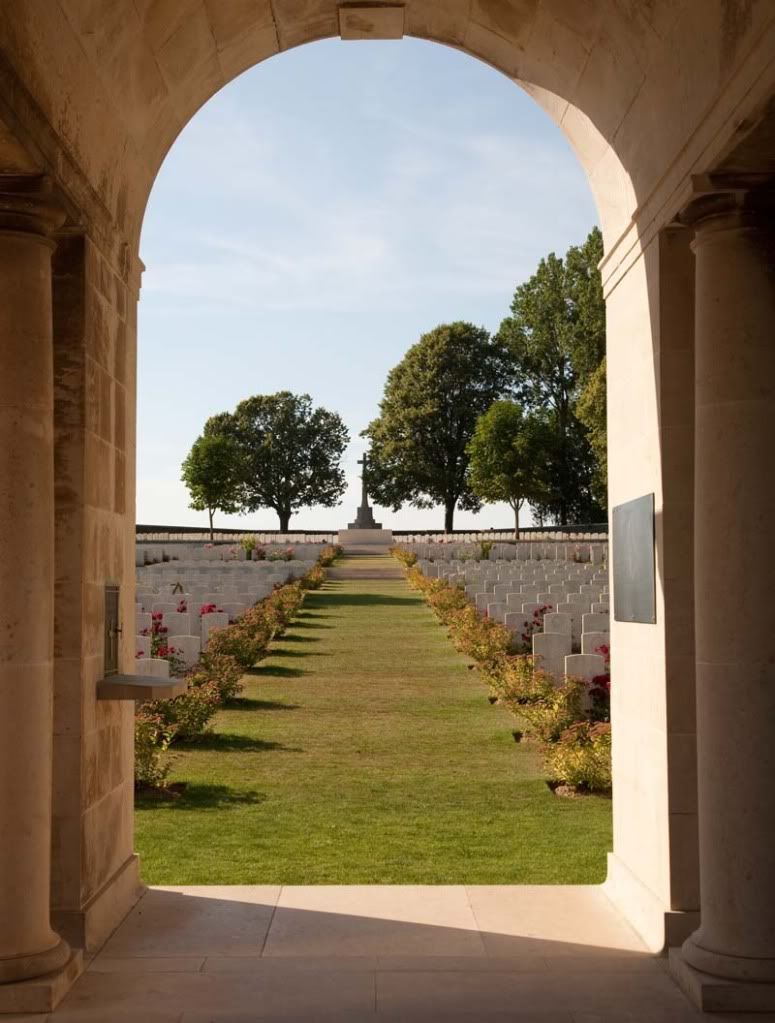
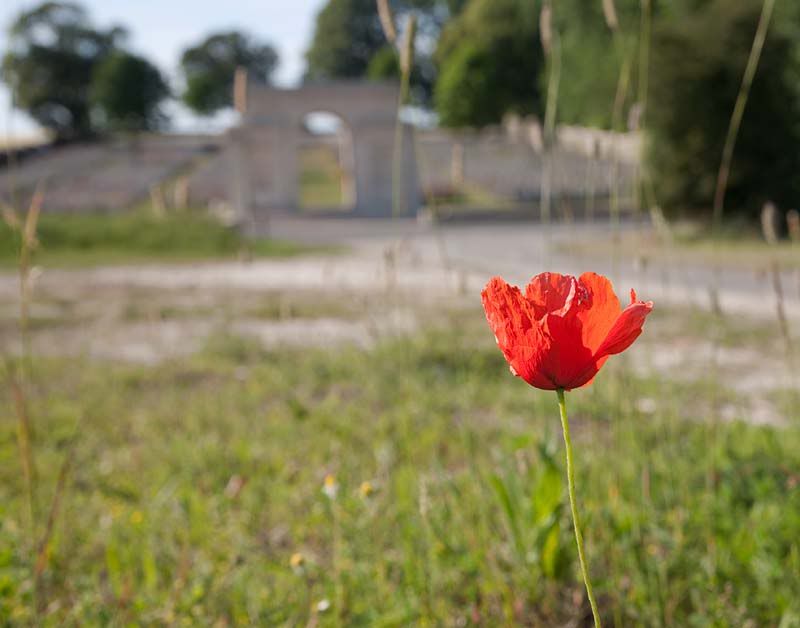
An interesting burial here is Lt Major William Booth (Major was his Christian name) who was a Yorkshire County Cricketer who twice played for England. He was killed by a shell on July 1st 1916.
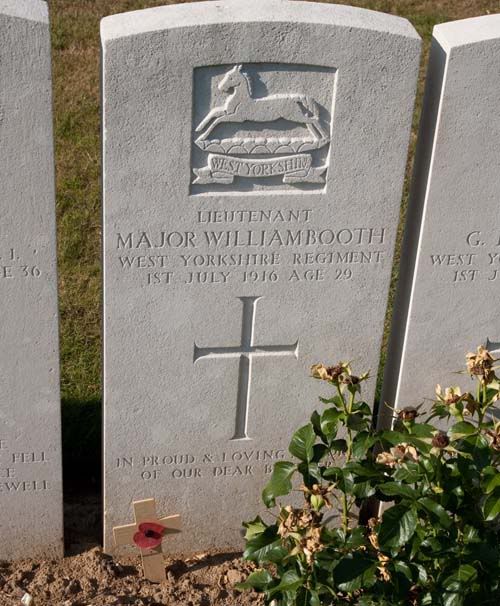
Serre Road Number 2 Cemetery just up the road is the largest on the Somme
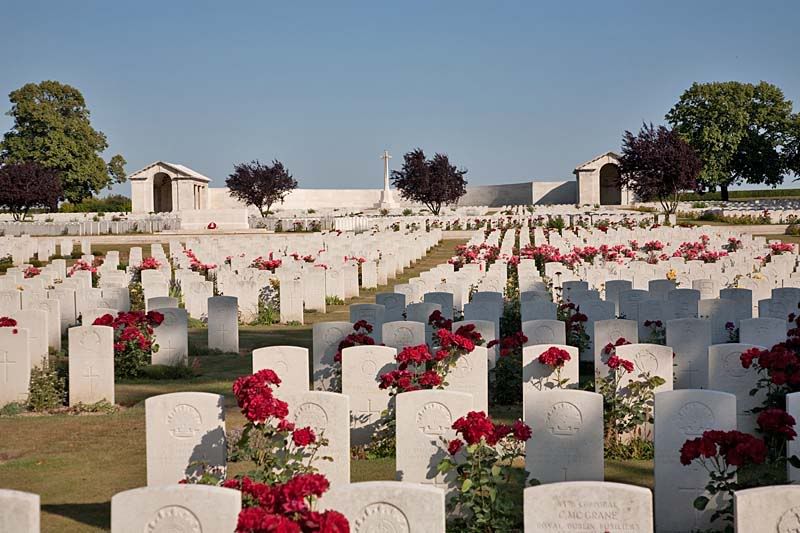
An unidentified German
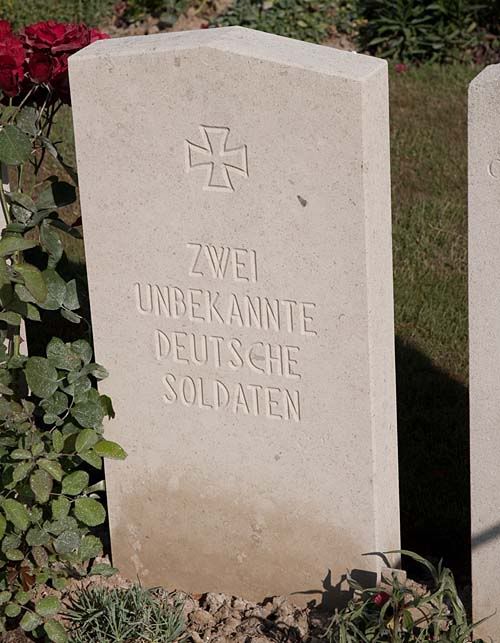
During WW2 the CWGC gardener (an Englishman) used his shed at the rear of the cemetery to hide downed aircrew. By the wars end Mr Ben Leach had helped 32 airmen escape the clutches of the Nazis.
The next day we donned our walking boots to walk the front line.
An hour and a half drive from Calais the Somme Battlefields were very different from the Salient. Instead of being flat below sea level, they are quite hilly and mostly chalky. Like the Salient they are rural in nature.
The Somme has been fought over for years, there is a spot just outside Delville Woods where Julius Caesar is reported to have addressed his troops before giving the Gauls a good kicking. Later the Prussians invaded then of course there was the Great War. Afterwards the area of course came under the jackboots of the Nazis before liberation in 1944.
The Cemeteries’ themselves differ from those on Passchendaele because they are mostly what is known as “concentration” cemeteries. This means that they were created from scratch after the war when the battlefields were cleared, there are several notable exceptions to this as we will see later. Those on the Salient are similar but more often the concentration element is centred around an original cemetery. This does not detract from them one iota, they are still very moving places to visit. One major point that both the Somme and The Salient have in common is that the Germans nearly always held the high ground. In the case of the Somme they had held it for 2 years and because of the chalky ground they had dug in and created quite considerable fortifications.
Our plan was to tour the Battlefields from North to South.
Day 1
Our journey through the battlefields begins in the North at Serre. Here we visited Sheffield Park which is centred on the site of 4 small Copses, Matthew , Mark, Luke and John which today are now one wood. In the wood are several memorials. The first of which is to The Accrington Pals who attacked here on the 1st July 1916.

At the edge of the wood are the remains of the trench the 31st Division attacked from

The view from the Trench towards the front line. The cemetery beyond the farmer is Queens Cemetery which is situated roughly mid way in No Mans Land. You will notice that the attack took place up hill, this will become a common theme.

A couple of the other memorials in Sheffield Park.


Heading through the park towards Railway Hollow Cemetery the land is as it was in 1918, with remains of trenches pock marked with shell holes.

The Cemetery contains 107 UK burials and is on the line of the old military railway which ran through here.


About 100 yards north of Sheffield Park is Like Copse Cemetery. A small cemetery of 72 burials of Sheffield City Battalion men. Including brothers L Cpl F and Pte W Gunstone, this marks the furthest north of the attacks on July 1st 1916. The men are buried in 1 long grave (a trench?) with the headstones staggered so that each man has his own.

If you turn and look the other way, its just possible to make out the line of the trench system in the bean field beyond. This view looks back towards Sheffield Park and I have marked the probable trench line on it.

Up the hill as we saw earlier lies the Queens Cemetery. It contains 311 graves many of which are Accrington Pals a large proportion of which are unidentified as this part of the battlefield was fought over between July and November with little or no chance made to clear it of bodies.



Walking up the hill about as far again and you come to the German Front line, looking back gives you and idea of what the Pals were up against. One machine gun could have/did mow them down.

The final Cemetery in this locality is Serre Road Number 3. Here we found some of the Iron Harvest waiting to be collected, in this case and Artillery Shell that doesn’t appear to have been fired, or was a dud. We didn’t touch it, but some got closer than others!


Heading back towards the main road, on the corner of a farm building is a memorial to the lost.

Back on the main road we stopped at Serre Road Cemetery Number 1. Here 71.6% of the 2412 burials are unidentified, one of the highest proportions on the Somme. The original burials are to the rear with the remainder being concentration after the war.


An interesting burial here is Lt Major William Booth (Major was his Christian name) who was a Yorkshire County Cricketer who twice played for England. He was killed by a shell on July 1st 1916.

Serre Road Number 2 Cemetery just up the road is the largest on the Somme

An unidentified German

During WW2 the CWGC gardener (an Englishman) used his shed at the rear of the cemetery to hide downed aircrew. By the wars end Mr Ben Leach had helped 32 airmen escape the clutches of the Nazis.
The next day we donned our walking boots to walk the front line.
Re: Legends – The Battlefields of The Somme
Wed Jul 21, 2010 2:12 pm
One day I would like to make a trip to France and check out WW1 stuff. That stuff fascinates me. Recently on the Military Ch they had a show called Digging up the Trenches. They found an incredible amount of relics inculding human remains buried just a few feet down in an excavated trench about 200' long. To realize the front line trenches stretched over 400 miles is mind bogling. Then there were supply trenches and additional trenches to hold reserves. Thats alot of dirt moved. Thanks for posting those. They are great.
Re: Legends – The Battlefields of The Somme
Wed Jul 21, 2010 3:44 pm
Day 2, walking the front line.
Today we walked from our base at Avril Williams superb B&B at Auchonvillers (or Ocean Villas as the Tommies called it) towards Beaumont Hamel. At the side of the road the Poppy and Cornflower grow together. The British and French symbols of remembrance in their natural environment.
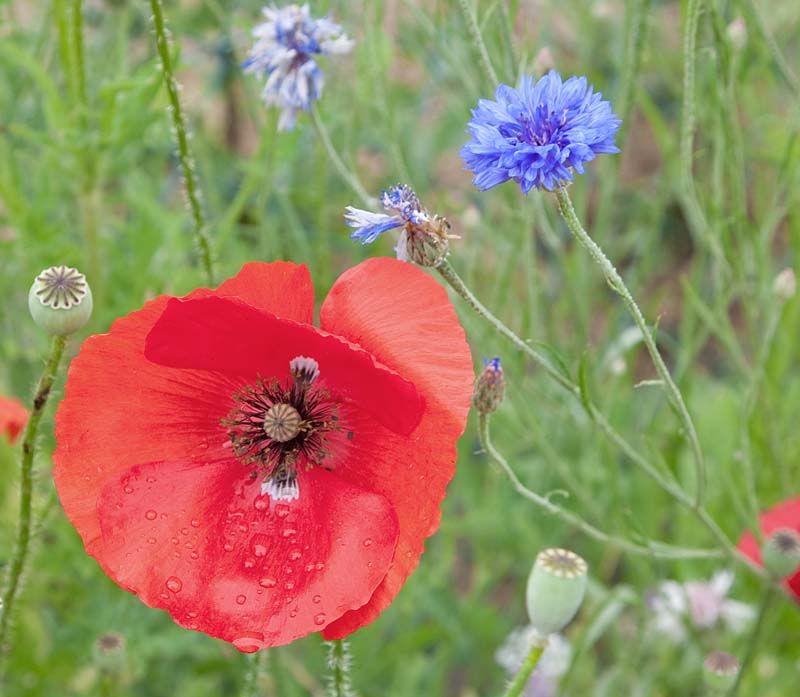
A short walk brings us to an interesting section of the old opposing trenches and the site of one of the most iconic images of the War. Just outside the village of Beaumont Hamel, on top of the ridgeline on the southern side of the road was the Hawthorn Ridge Redoubt. Ten minutes before Zero Hour on 1st July 1916 a mine which had been tunnelled under the Redoubt was exploded. It consisted of over 18 Tons of high explosive. Its deliberate early detonation gave the game away.
The site of the mine is the copse of trees in the middle of the shot
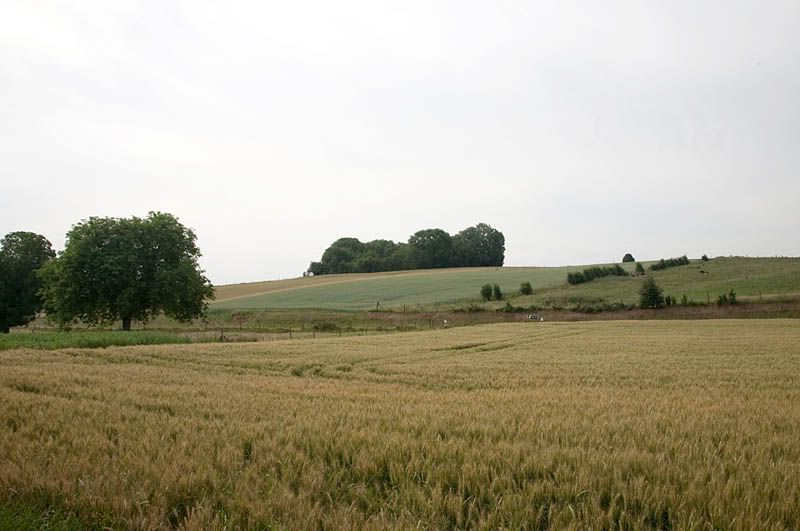
There were a number of mines along the front line, the plan being to explode them at Zero Hour (07.30am) and for troops to rush them and capture the rim thus giving cover for further attacks on enemy lines. The decision to explode this one was made because it was so large that they thought the ground would need time to settle. The 10 minutes notice allowed the Germans to capture the rim and as the men of the 29th Division were attacking up hill (once again) they became easy pickings when the moved 10 minutes later. They managed to gain a foothold on the craters edge and this was the only success on their front, sadly even this was abandoned later in the day.
This is an overlay of the mine as it is today with an original photo. My modern image was taken as close as possible to the original. Literally standing in the footsteps of history.
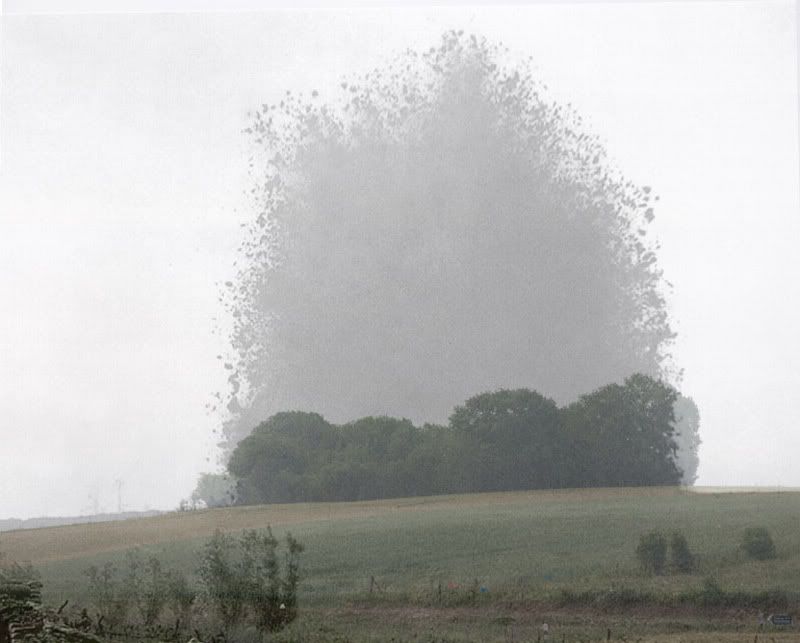
Opposite the crater on the opposite ridge line at the entrance to the famous Sunken Road (more of this in a bit) is the 8th Argyll and Sutherland Highlanders Memorial. This marks the spot where this unit attacked so successfully in November of 1916. It is located roughly at the mid point of the July 1916 No Mans Land.
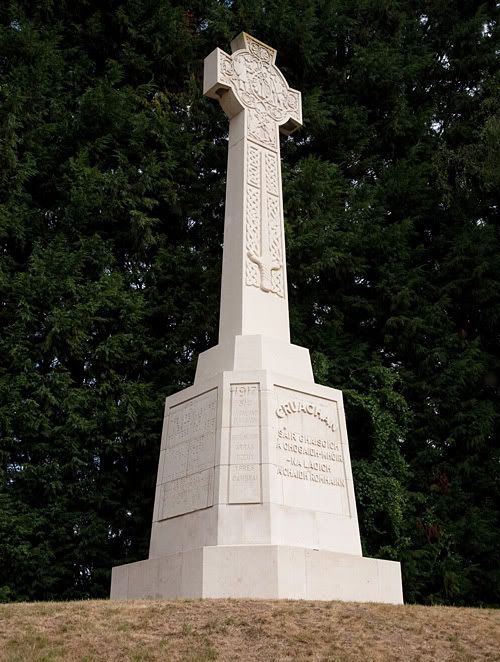
The Sunken Road is to the left of this memorial. Walking up it the remains of trenches dugouts and tunnels can clearly be seen. The front line runs parallel to this road.
This is the view looking up (away from the front line)
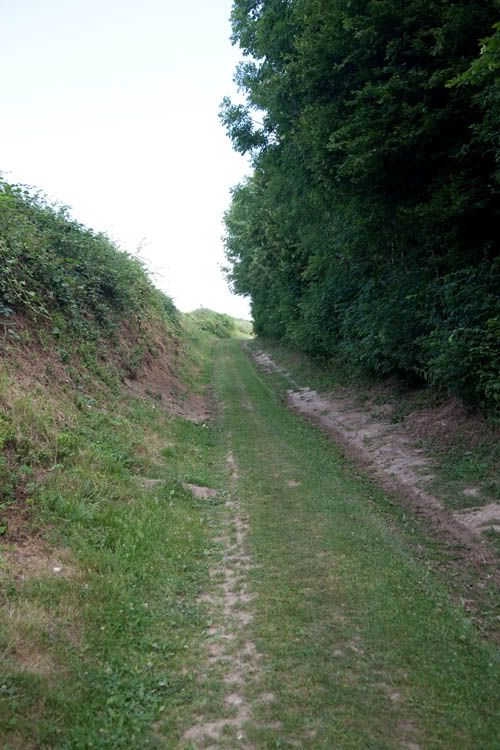
This the view down.

An interesting find was this old railway track being used as a fence post. Clearly a remnant of a violent past.
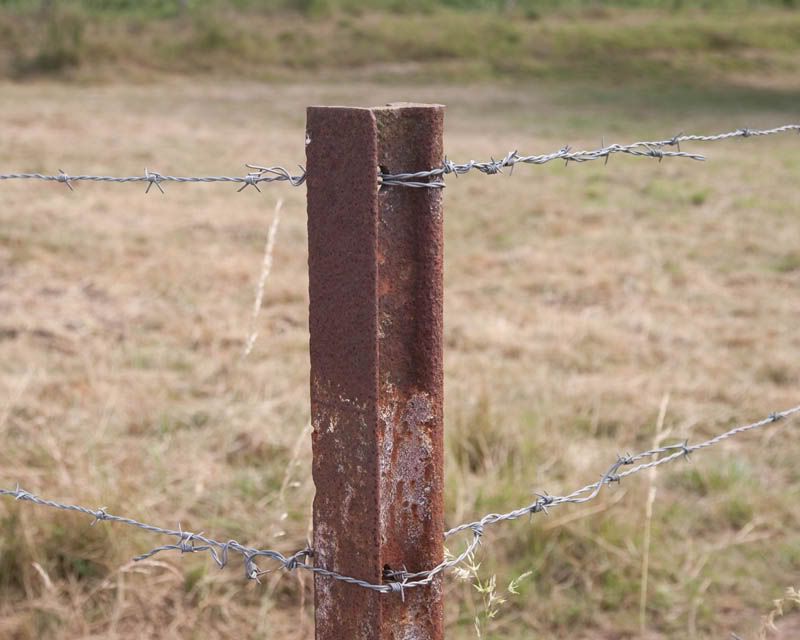
The Beaumont Hamel British Cemetery lies at the mid point of no mans land, it contains 176 graves nearly half of them unidentified.
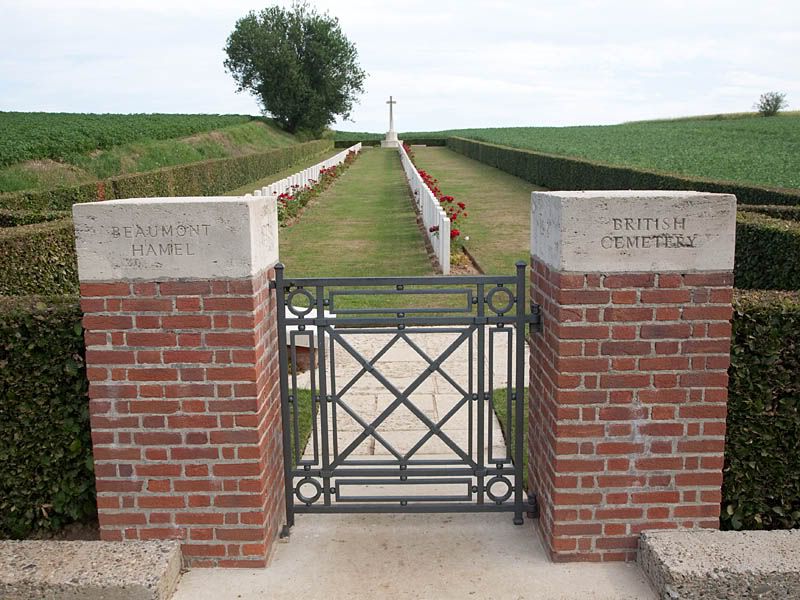
From this point we walked up the hill towards the crater, this is the view back over the battlefield
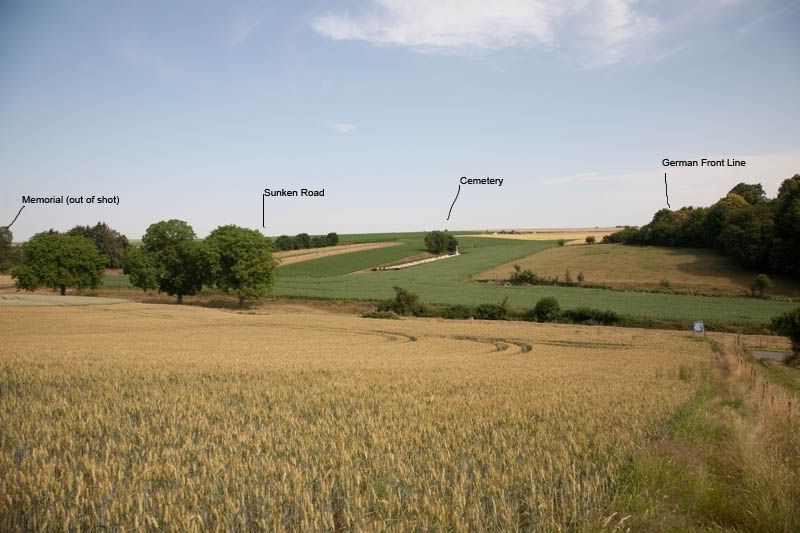
The view into the crater. Its risky to go down into it, mainly because the sides are so steep. Its two craters as another mine was exploded here in November. It is do-able but we had lots to do and I certainly didn’t fancy being stuck in a mine crater!
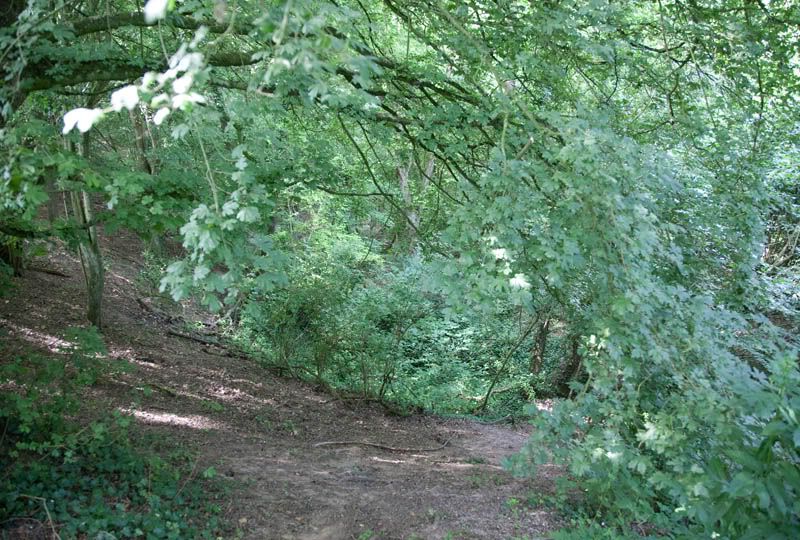
Just beyond the crater lies Hawthorn Ridge Cemetery Number 1. It contains 153 burials from 1916,17 and 18 and was created during a lull in the fighting in 1917. The bodies of the dead from 1916 would quite possibly have been removed from the battlefield where they died, others would have come from makeshift graves. 42 of the men here are from the 16th Middlesex Battalion which was a New Army Battalion raised from Public Schoolboys..

Our next destination was the famous Newfoundland Memorial Park. But before we set off the French Air Force paid us a visit.

More soon.
Today we walked from our base at Avril Williams superb B&B at Auchonvillers (or Ocean Villas as the Tommies called it) towards Beaumont Hamel. At the side of the road the Poppy and Cornflower grow together. The British and French symbols of remembrance in their natural environment.

A short walk brings us to an interesting section of the old opposing trenches and the site of one of the most iconic images of the War. Just outside the village of Beaumont Hamel, on top of the ridgeline on the southern side of the road was the Hawthorn Ridge Redoubt. Ten minutes before Zero Hour on 1st July 1916 a mine which had been tunnelled under the Redoubt was exploded. It consisted of over 18 Tons of high explosive. Its deliberate early detonation gave the game away.
The site of the mine is the copse of trees in the middle of the shot

There were a number of mines along the front line, the plan being to explode them at Zero Hour (07.30am) and for troops to rush them and capture the rim thus giving cover for further attacks on enemy lines. The decision to explode this one was made because it was so large that they thought the ground would need time to settle. The 10 minutes notice allowed the Germans to capture the rim and as the men of the 29th Division were attacking up hill (once again) they became easy pickings when the moved 10 minutes later. They managed to gain a foothold on the craters edge and this was the only success on their front, sadly even this was abandoned later in the day.
This is an overlay of the mine as it is today with an original photo. My modern image was taken as close as possible to the original. Literally standing in the footsteps of history.

Opposite the crater on the opposite ridge line at the entrance to the famous Sunken Road (more of this in a bit) is the 8th Argyll and Sutherland Highlanders Memorial. This marks the spot where this unit attacked so successfully in November of 1916. It is located roughly at the mid point of the July 1916 No Mans Land.

The Sunken Road is to the left of this memorial. Walking up it the remains of trenches dugouts and tunnels can clearly be seen. The front line runs parallel to this road.
This is the view looking up (away from the front line)

This the view down.

An interesting find was this old railway track being used as a fence post. Clearly a remnant of a violent past.

The Beaumont Hamel British Cemetery lies at the mid point of no mans land, it contains 176 graves nearly half of them unidentified.

From this point we walked up the hill towards the crater, this is the view back over the battlefield

The view into the crater. Its risky to go down into it, mainly because the sides are so steep. Its two craters as another mine was exploded here in November. It is do-able but we had lots to do and I certainly didn’t fancy being stuck in a mine crater!

Just beyond the crater lies Hawthorn Ridge Cemetery Number 1. It contains 153 burials from 1916,17 and 18 and was created during a lull in the fighting in 1917. The bodies of the dead from 1916 would quite possibly have been removed from the battlefield where they died, others would have come from makeshift graves. 42 of the men here are from the 16th Middlesex Battalion which was a New Army Battalion raised from Public Schoolboys..

Our next destination was the famous Newfoundland Memorial Park. But before we set off the French Air Force paid us a visit.

More soon.
Re: Legends – The Battlefields of The Somme
Wed Jul 21, 2010 5:06 pm
Another great set of photos along with informative descriptions! Keep it coming .
Re: Legends – The Battlefields of The Somme
Wed Jul 21, 2010 7:00 pm
Very interesting, thanks!
Re: Legends – The Battlefields of The Somme
Wed Jul 21, 2010 8:01 pm
Keep the posts coming!
It reminds me of Vicksburg, Mississippi....
It reminds me of Vicksburg, Mississippi....
Re: Legends – The Battlefields of The Somme
Wed Jul 21, 2010 11:45 pm
Rather fitting I started reading this while I'm watching "All Quiet on the Western Front" Lovley photos with great narration. Thank you for sharing.
Does this battlefield remind anyone else of ANTIETAM in Sharpsburg, MD?
Does this battlefield remind anyone else of ANTIETAM in Sharpsburg, MD?
Re: Legends – The Battlefields of The Somme
Thu Jul 22, 2010 7:00 am
Thanks very much for posting these photos. Excellent descriptions, too.
This is a trip I've long wanted to make myself--walking the old Western Front to see what is there to be seen.
A well done post, reminiscent of a book I recently read:
Back to the Front
Stephen O'Shea is the author. Fascinating stuff, like this post.
This is a trip I've long wanted to make myself--walking the old Western Front to see what is there to be seen.
A well done post, reminiscent of a book I recently read:
Back to the Front
Stephen O'Shea is the author. Fascinating stuff, like this post.
Re: Legends – The Battlefields of The Somme
Thu Jul 22, 2010 7:34 am
Brilliant!!!!
Cheers
Cheers
Re: Legends – The Battlefields of The Somme
Thu Jul 22, 2010 3:10 pm
Newfoundland Memorial Park.
Continuing on across the fields, making sure to keep to the tractor tracks so as not to damage the crop and avoid any, erm, Ordnance that may be lying around (if the tractor doesn’t go bang we should in theory be safe) we arrived at the rear entrance to Newfoundland Memorial Park, on of the most emotional and memorable stops of the whole trip. Purchased by the then Newfoundland Government after the war, it contains the complete trench systems of July-Novermber1916; 3 Cemeteries, and 3 memorials. It stands in memory of the Newfoundland Volunteer Battalion which launched its ill fated attack an hour after zero hour on 1st July 1916.
The first memorial we came to was the 51st Highland Division Memorial standing on the German front line.
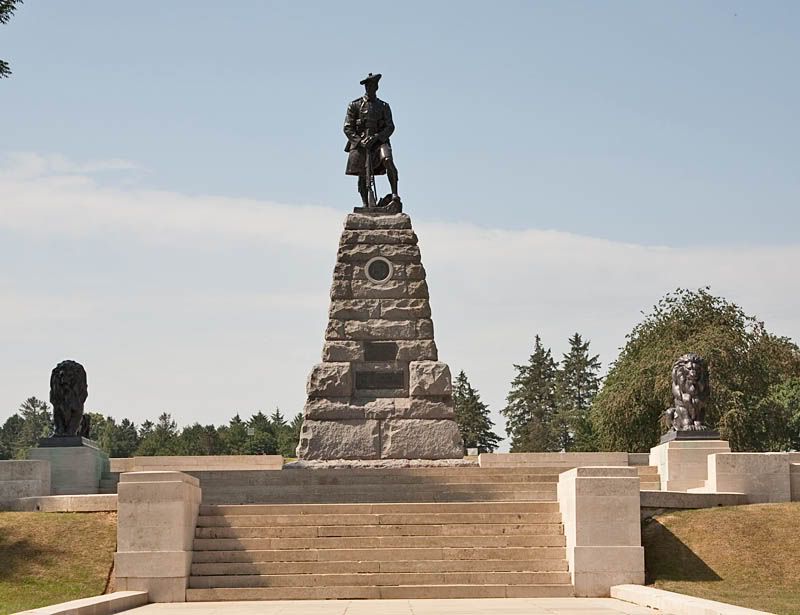
Nearby is the unique Hunters Cemetery. Containing 46 highlanders who were buried in a shell hole, its headstones are set in a circular pattern around the cross of sacrifice.

Behind this and the memorial lie the remains of the old German front line.
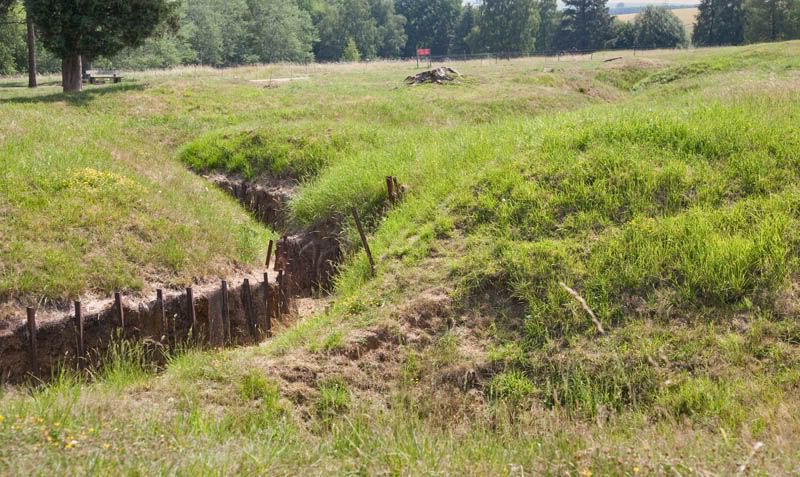
Next along the path is Hawthorn Ridge Cemetery number 2. Containing the graves of 214 men who perished on the 1st July 1916,

including Private William Masters of the Newfoundland Regiment. Most of not all of the Newfoundland Graves have the Canadian flag on them.
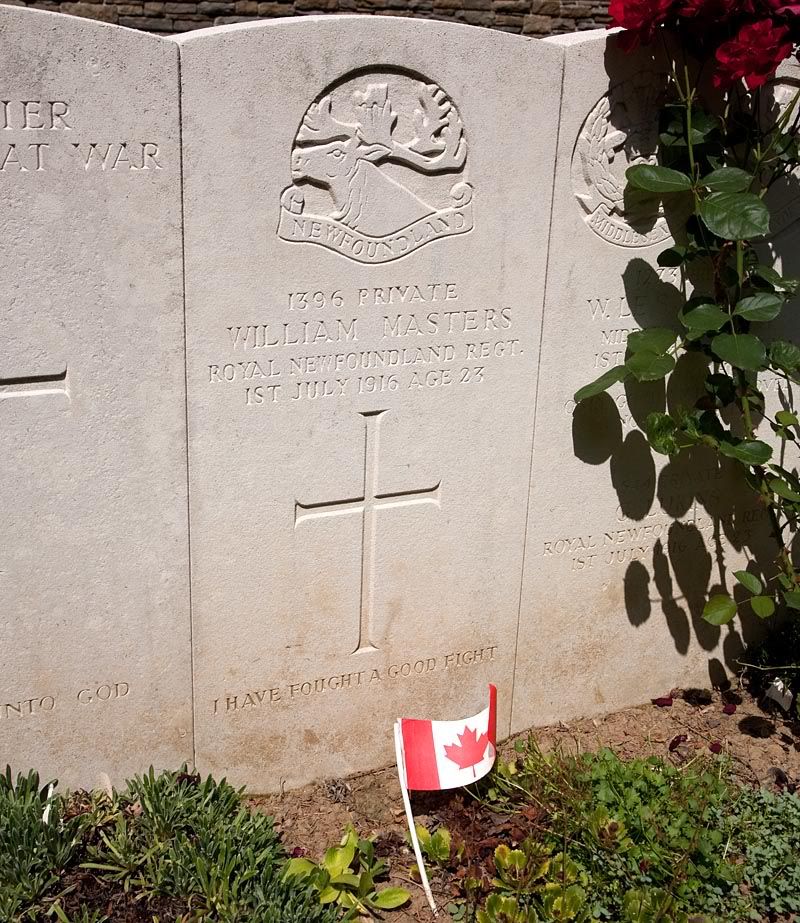
The first view of the Newfoundland Memorial is gained through an alleyway of trees.
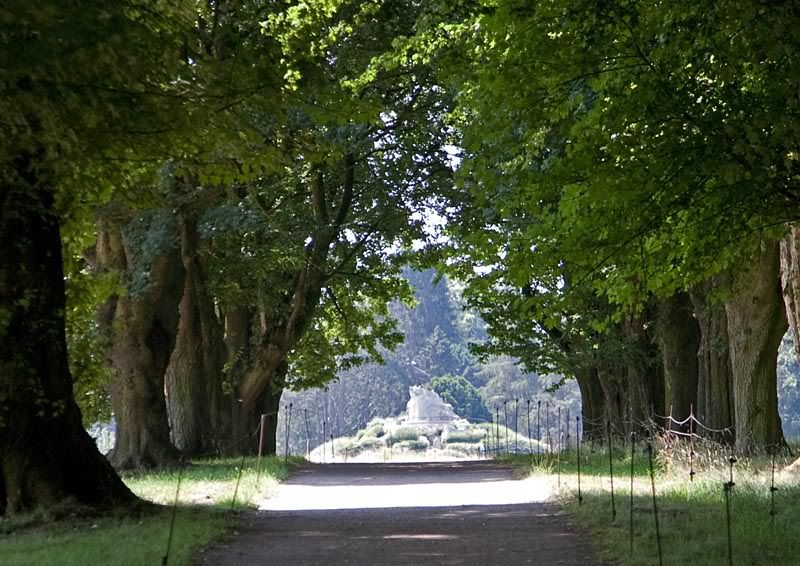
Before we got there we turned left to walk across the Battlefield.

The old trenches are untouched since the war apart from the grass. Indeed just after the war there was even the wreckage of a tank visible but this is long since gone. The barb wire spiral posts are still there though.
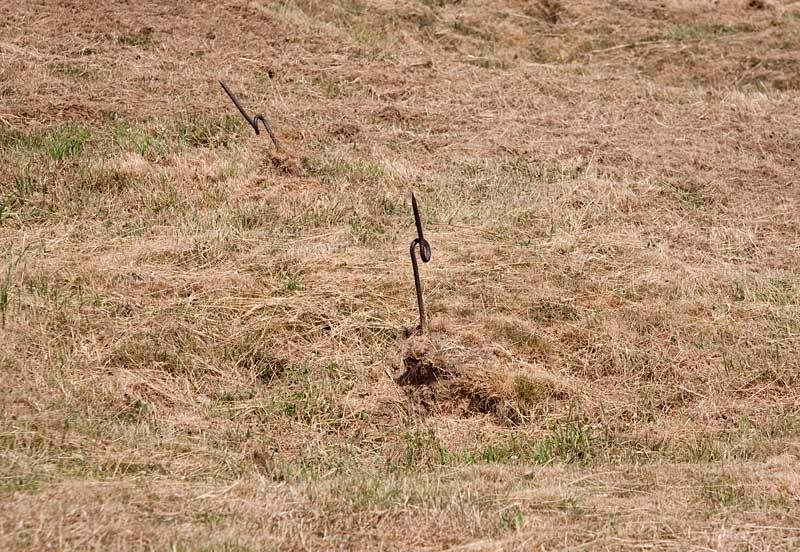
As we walk down the hill we walked along a metalled path (for safety) but the ground still bears the marks of the shelling.

Onwards past the Danger Tree which marks the furthest the Newfoundlanders got in the battle (nowhere near the front line)
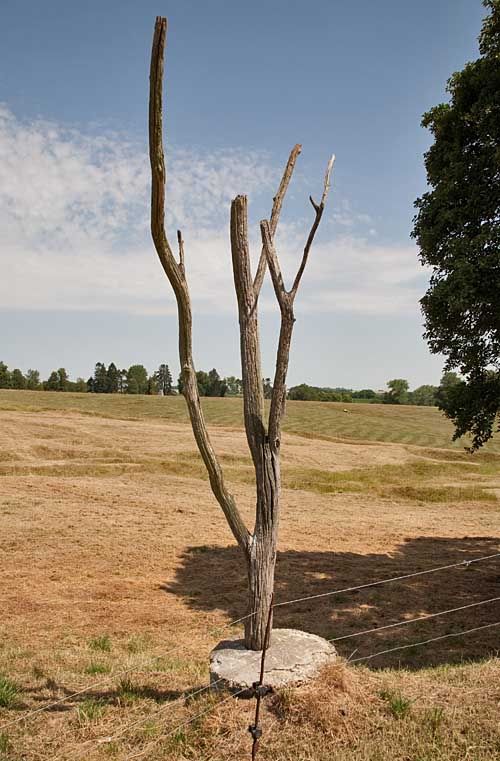
At the bottom of the Hill is the Y Ravine Cemetery. Made in 1916 and containing the bodies of 366 men. It was here that I very privately placed a cross on the grave of a Newfie and contemplated the sacrifice they made. It wasn’t their fight (they weren’t part of Canada at that point) but they came anyway. And didn’t even make the front line on the opening day. The German front line is a few years beyond the rear wall.
.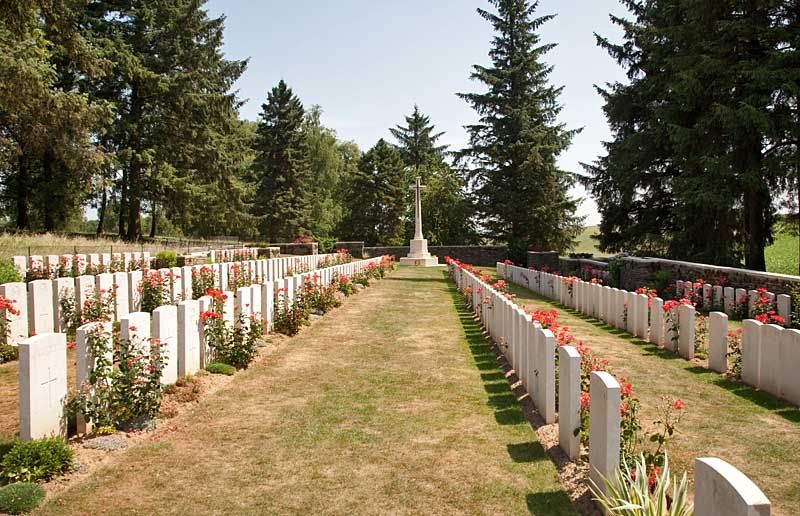
Retracing our steps we made it to the memorial. It is surrounded by Trenches, many of which can be walked along. In 1916 they were some 2 ft deeper and had fire steps cut into the edges but they are a close as we can now get to how they were.
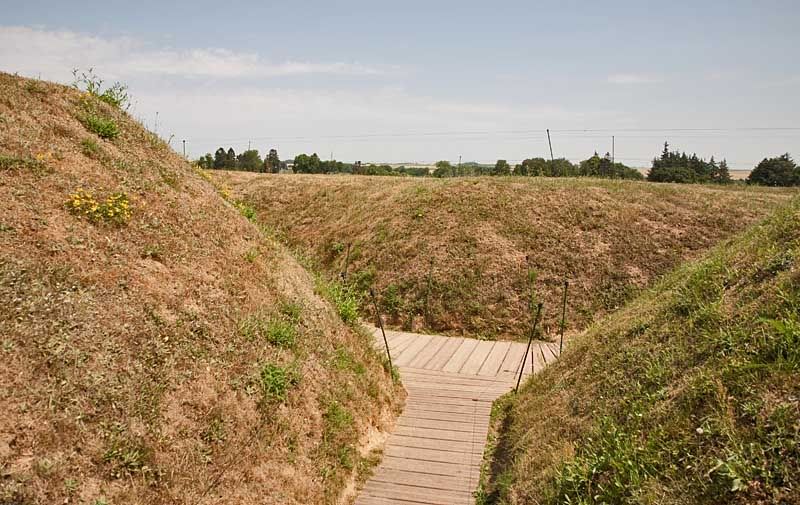
The view of the enemy wasn’t that good.

The view from the memorial gives an overall impression of the lie of the land.

The Newfoundlanders were attacking from behind us. They were in the second wave and so were in a trench to the rear, their way was blocked by the dead and wounded so, rather than delay and clear way they went of the top from a second line trench. The German machine gunners simply cut them down, mostly before they made the front line. Indeed many of the German Divisional histories make no mention of the Newfies because they never came across them, they were all dead behind their own lines.
The memorial is one of four on the Western Front in the form of a Caribou calling for its young.

I noticed it was floodlit and asked one of the park rangers if it was possible to take pictures after dark. On being told that it was encouraged we went back after dark. It was breathtaking.

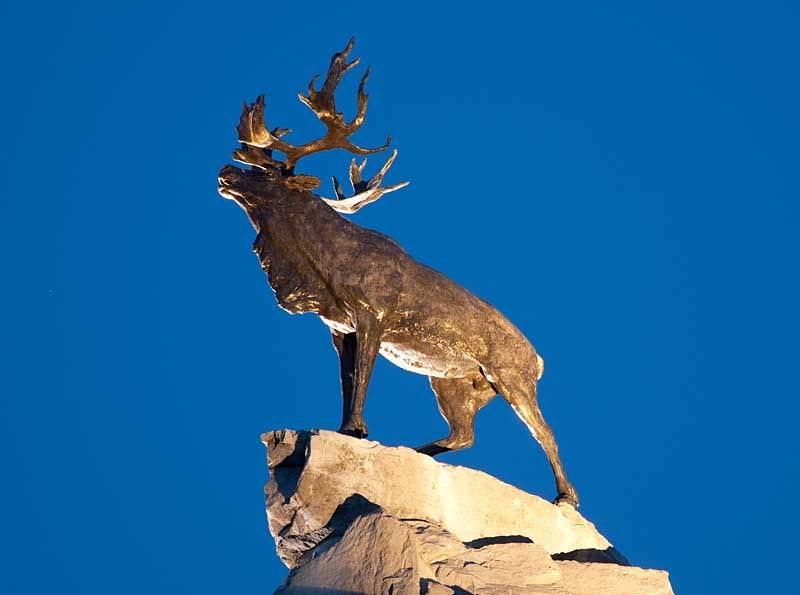
In order to get a better view, I walked into one of the trenches and set up my tripod. By this time I was on my own and we had split up to all get different shots. There were at least 4 Tawny Owls in the woods calling to each other and the local farmer was shooting rabbits. One of my companions was wandering around the woods using a flash on his camera
It was then that the lights went out!

That was the longest 20 seconds of my life.
Day 3 next and a sad discovery.
Continuing on across the fields, making sure to keep to the tractor tracks so as not to damage the crop and avoid any, erm, Ordnance that may be lying around (if the tractor doesn’t go bang we should in theory be safe) we arrived at the rear entrance to Newfoundland Memorial Park, on of the most emotional and memorable stops of the whole trip. Purchased by the then Newfoundland Government after the war, it contains the complete trench systems of July-Novermber1916; 3 Cemeteries, and 3 memorials. It stands in memory of the Newfoundland Volunteer Battalion which launched its ill fated attack an hour after zero hour on 1st July 1916.
The first memorial we came to was the 51st Highland Division Memorial standing on the German front line.

Nearby is the unique Hunters Cemetery. Containing 46 highlanders who were buried in a shell hole, its headstones are set in a circular pattern around the cross of sacrifice.

Behind this and the memorial lie the remains of the old German front line.

Next along the path is Hawthorn Ridge Cemetery number 2. Containing the graves of 214 men who perished on the 1st July 1916,

including Private William Masters of the Newfoundland Regiment. Most of not all of the Newfoundland Graves have the Canadian flag on them.

The first view of the Newfoundland Memorial is gained through an alleyway of trees.

Before we got there we turned left to walk across the Battlefield.

The old trenches are untouched since the war apart from the grass. Indeed just after the war there was even the wreckage of a tank visible but this is long since gone. The barb wire spiral posts are still there though.

As we walk down the hill we walked along a metalled path (for safety) but the ground still bears the marks of the shelling.

Onwards past the Danger Tree which marks the furthest the Newfoundlanders got in the battle (nowhere near the front line)

At the bottom of the Hill is the Y Ravine Cemetery. Made in 1916 and containing the bodies of 366 men. It was here that I very privately placed a cross on the grave of a Newfie and contemplated the sacrifice they made. It wasn’t their fight (they weren’t part of Canada at that point) but they came anyway. And didn’t even make the front line on the opening day. The German front line is a few years beyond the rear wall.
.

Retracing our steps we made it to the memorial. It is surrounded by Trenches, many of which can be walked along. In 1916 they were some 2 ft deeper and had fire steps cut into the edges but they are a close as we can now get to how they were.

The view of the enemy wasn’t that good.

The view from the memorial gives an overall impression of the lie of the land.

The Newfoundlanders were attacking from behind us. They were in the second wave and so were in a trench to the rear, their way was blocked by the dead and wounded so, rather than delay and clear way they went of the top from a second line trench. The German machine gunners simply cut them down, mostly before they made the front line. Indeed many of the German Divisional histories make no mention of the Newfies because they never came across them, they were all dead behind their own lines.
The memorial is one of four on the Western Front in the form of a Caribou calling for its young.

I noticed it was floodlit and asked one of the park rangers if it was possible to take pictures after dark. On being told that it was encouraged we went back after dark. It was breathtaking.


In order to get a better view, I walked into one of the trenches and set up my tripod. By this time I was on my own and we had split up to all get different shots. There were at least 4 Tawny Owls in the woods calling to each other and the local farmer was shooting rabbits. One of my companions was wandering around the woods using a flash on his camera
It was then that the lights went out!

That was the longest 20 seconds of my life.
Day 3 next and a sad discovery.
Re: Legends – The Battlefields of The Somme
Thu Jul 22, 2010 9:00 pm
More great photos! The remains of the trenches and the barbed wire posts are most interesting. Not sure what to expect with your "sad discovery".
Re: Legends – The Battlefields of The Somme
Fri Jul 23, 2010 12:00 am
Did you have the feeling you were being 'observed'? I know every time we took someone out to Chalmette in St. Bernard (Jackson's battle of New Orleans battlefield) I always felt that we were being watched by the long time 'occupants' who struggled over that piece of ground so long ago. I'm sorry now that I never made the effort to visit Gettysburg or Antietam when I lived so much closer.
Re: Legends – The Battlefields of The Somme
Fri Jul 23, 2010 11:59 am
Thank you for sharing your photographs and story. This is one of the best posts ever on Wix or anywhere else for that matter. I hope I get the chance to visit these places in person one day.
Re: Legends – The Battlefields of The Somme
Fri Jul 23, 2010 12:23 pm
I have two old copies (different versions) of American Battle Fields in Europe, published after the war (before WW2) as a sort of "tour guide" book to the World War 1 battlefields and have long thought it would be good to go see them some time.
Ryan
Ryan
Last edited by RyanShort1 on Fri Jul 23, 2010 12:40 pm, edited 1 time in total.
Re: Legends – The Battlefields of The Somme
Fri Jul 23, 2010 12:36 pm
Wow awesome pictures. Thanks for sharing!